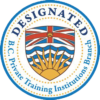Let’s say you’ve just graduated film school. You’ve managed to convince investors (AKA your parents) to give you $5000 to start your career. What equipment should you buy for your film kit?
Camera
There is really no right answer in this category, it all depends on what you’ll be shooting and your personal preference. Don’t spend thousands of dollars on a camera unless you’re sure it will pay for itself. While REDs and other high-end cameras may be alluring, going the DSLR route is definitely a much better choice for beginners.
Good Choices:
- Panasonic AF100A: $2000
- Panasonic GH4: $1700
- Canon 7Dii: $1500
- Canon 70D: $1000
- Olympus E-M5 II: $1000
Lenses
If you know what to look for and are comfortable going second hand, this is the area to do it, but don’t cheap out! Your glass is honestly more important than the camera behind it. The focal lengths you choose will depend on the sensor size of your camera, but I would recommend getting a couple good zooms and 24mm and 50mm equivalent primes.
Tripod
A good set of sticks with a fluid head is another essential for any filmmaker. Manfrotto is the standard but can get quite pricey so shop around. Pay attention to the load capacity and make sure you’re not going to exceed it. The Manfrotto 190X3 is great if you have a DSLR, but put a video camera on it and you’ll quickly pass the 8 lb. limit. Expect to pay $300-$500 for a decent set of legs. I also keep a cheap photo tripod for use in sand, mud and other environments that might be damaging.
Audio Equipment
You’ll need at least a shotgun mic for shooting with a DSLR, but a couple of lavalieres are a good investment as well. If you’ll be doing dramatic shooting you’ll probably need wireless lavs, but for interviews I love my Sony ECM-77s. The good thing with mics is that if you treat them right, they’ll last forever, so don’t be afraid to spend a little bit of money here. Don’t forget to budget for a recorder and some cables as well.
Accessories
Lighting, shoulder rigs, extra batteries, data storage… you could easily spend your entire budget again on accessories and specialized equipment. Ask yourself what you’ll be shooting the most and prioritize your shopping list based on that. Will you be doing a lot of corporate work? Then you’ll probably want a good lighting kit. Dramatic projects? Maybe you can get away with homemade lighting and some C-stands and a field monitor are a better choice. Get what you need before getting what you want.
your shopping list based on that. Will you be doing a lot of corporate work? Then you’ll probably want a good lighting kit. Dramatic projects? Maybe you can get away with homemade lighting and some C-stands and a field monitor are a better choice. Get what you need before getting what you want.
Dylan’s Kit:
Here’s what I would buy. As most of my experience is with Canon, that’s what I’m sticking with. I do more doc projects than drama, so I kept that in mind, and built a kit that works for corporate jobs as well.
Keep in mind there are always rebates and other deals that you can find. With those I might be able to knock another couple hundred off my final price.
Camera and Lenses
- Canon 7Dii w/ kit lens: $1800
- Canon 18-135 3.5-5.6: Included
- Canon 24-70 2.8 (Used): $1000
- Canon 50 1.8 (Used): $80
- Canon 28 1.8 (Used): $350
Tripod
- Manfrotto 190X3: $300
Audio
- Røde NTG2 Shotgun Kit: $250
- Shock Mount: Included
- 1.5’ XLR: Included
- Sony ECM-77 Lav: $280
- Zoom H4N: $200
- 20’ XLR: $15
Extras
- Lowel Pro-Visions Light Kit: $450
- Extra LP-E6 Battery: $35
- 32GB SD Card (x2): $60
- Pelican 1510 Hard Case: $165
Total cost: $4985
Go shoot some films and make your parents investors proud!






